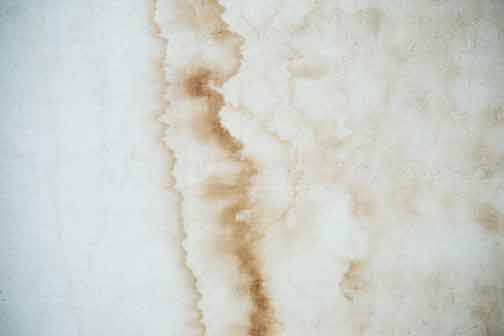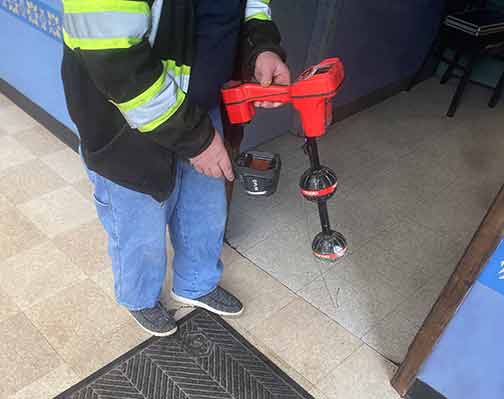Water leaks behind walls can go unnoticed for weeks or even months, causing significant damage and leading to costly repairs. Detecting these hidden leaks early is crucial to avoid structural damage and unsightly mold growth. Below we will explore various methods and techniques to detect water leaks behind a wall, enabling prompt action and minimizing potential damage.
Signs of Water Leaks Behind a Wall
Detecting water leaks early requires keen observation and attentiveness to potential signs. Keep an eye out for the following indicators that might point to a hidden water leak behind a wall:
- Damp or discolored patches: Look for damp spots or discoloration on walls, particularly near plumbing fixtures or in areas prone to water exposure, such as bathrooms and kitchens.
- Musty odors: A persistent musty smell can indicate mold growth, which often thrives in areas with excessive moisture.
- Peeling or bubbling paint: Water trapped behind a wall can cause paint to peel or bubble as it loses adhesion to the surface.
- Warped or stained baseboards or flooring: Water leaks can lead to damage not only to the walls but also to the baseboards and flooring. Look for signs of warping, staining, or buckling.
- Unexplained increase in water bills: A sudden increase in water consumption without a logical explanation could suggest an unseen water leak.
Prevention and Maintenance
Preventive measures can go a long way in minimizing the risk of water leaks behind walls. Here are some essential tips for prevention and regular maintenance:
- Routine inspections: Regularly inspect your plumbing fixtures, including faucets, showerheads, and pipes, for any signs of leakage or wear. Take immediate action if you notice any issues.
- Proper installation: Ensure that plumbing fixtures are installed correctly by professionals to avoid potential leaks caused by faulty connections or poor workmanship.
- Monitor water pressure: High water pressure can strain pipes and increase the chances of leaks. Consider installing a pressure regulator to maintain an optimal pressure level.
- Seal gaps and cracks: Inspect the walls for any gaps or cracks that could allow water to seep through. Seal them with appropriate caulking or sealant to prevent leaks.
- Insulate pipes: In colder climates, insulate exposed pipes to protect them from freezing, which can cause leaks once the pipes thaw.
Methods to Detect Water Leaks Behind a Wall
- Visual inspection: Start by visually examining the walls for any visible signs of water damage, such as stains, discoloration, or peeling paint. Pay close attention to areas near plumbing fixtures or where water pipes are located.
- Infrared thermography: This method involves using an infrared camera to detect temperature differences behind the wall. Water leaks can create cooler areas due to evaporation, which can be identified with thermographic imaging.
- Moisture meters: These handheld devices can measure the moisture content of materials, including drywall. By comparing moisture levels in different areas, you can pinpoint potential water leaks.
- Dye testing: Dye testing involves adding a colored dye to the water supply. If there is a leak, the dyed water will seep into the walls and become visible on the drywall, helping to locate the source of the leak.
- Acoustic listening devices: Specialized listening devices can detect the sound of water movement behind walls. By identifying the sound of a leaking pipe or running water, you can narrow down the area of the leak.
- Pipe inspection cameras: Utilizing a small camera attached to a flexible cable, these devices allow for visual inspection of pipes inside walls. By inserting the camera into the pipe, you can identify any leaks or blockages.
- Water pressure testing: A pressure test involves temporarily shutting off the water supply and monitoring the system’s pressure. A drop in pressure could indicate a hidden leak.
- Professionals: If all else fails, it may be necessary to seek the assistance of a professional leak detection service. These professionals have specialized equipment and expertise to locate and repair hidden water leaks.
Taking Action
Once you have successfully detected a water leak behind a wall, it is crucial to take prompt action to mitigate the damage. Here are the steps you should follow:
- Shut off the water supply: Locate the main water shut-off valve and turn it off to stop the flow of water. This will prevent further damage until the leak is repaired.
- Assess the extent of the damage: Carefully evaluate the affected area to determine the severity of the damage. Keep in mind that water can cause structural issues, mold growth, and affect electrical systems.
- Contact a professional plumber: Unless you have the necessary expertise, it is advisable to call a plumber near you to repair the water leak. They will identify the source of the leak and take appropriate action to fix it.
- Dry out the affected area: Use dehumidifiers and fans to dry out the affected walls and prevent the growth of mold and mildew.
- Repair and restore: Once the leak is repaired and the affected area is dry, repair any damage to walls, flooring, or baseboards. Repaint or refinish as needed to restore the appearance of the space.
To Sum It Up
Detecting water leaks behind walls requires vigilance and the use of appropriate detection methods. By paying attention to signs of water damage, conducting regular maintenance, and utilizing various detection techniques, you can identify leaks early and prevent extensive damage to your property. Remember, if you are unsure or unable to locate a water leak, it is always advisable to seek professional water leak detection service help to ensure an accurate diagnosis and efficient repair.

